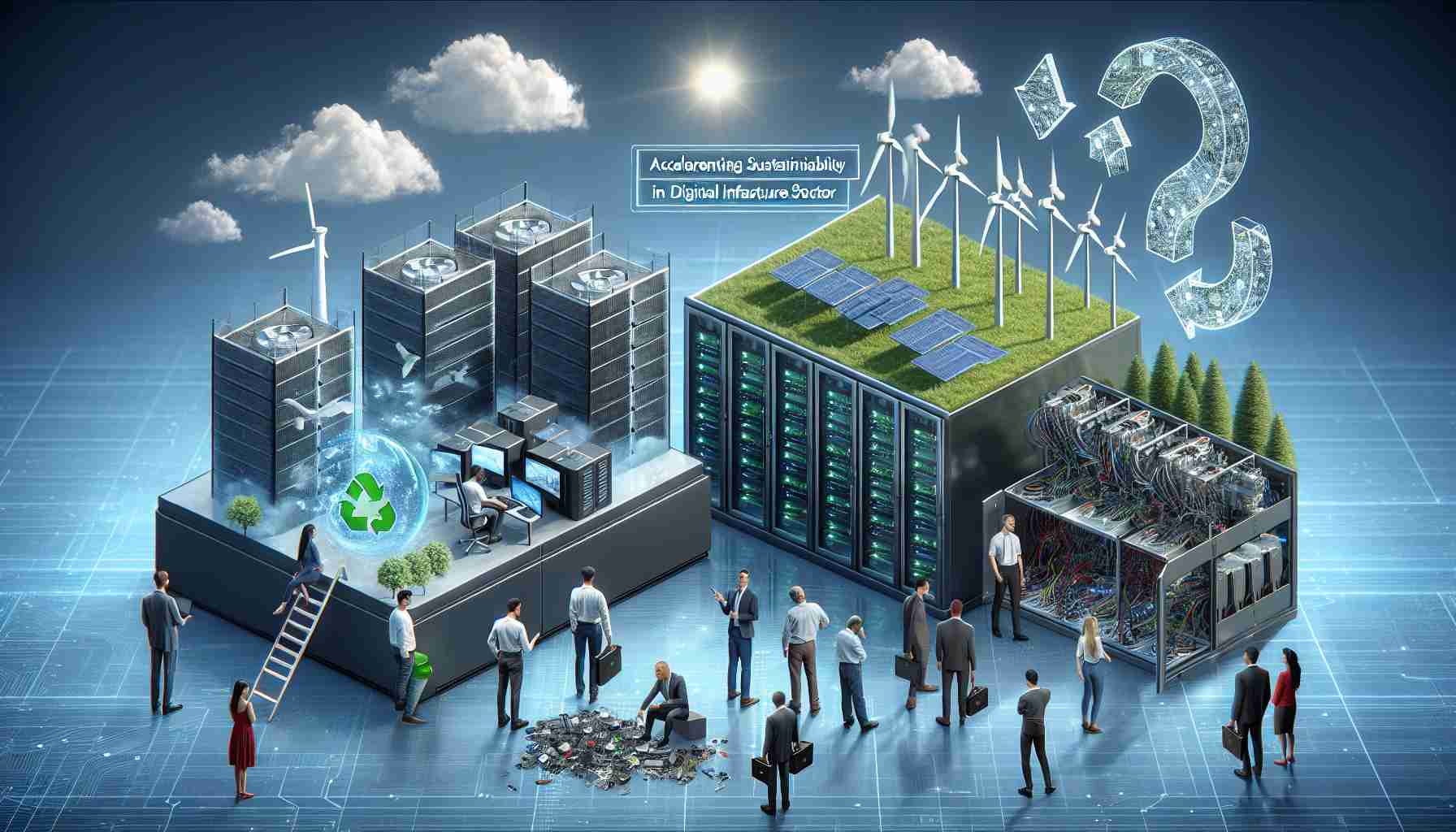Leading Companies Advocate for Environmental Transparency
A group of major players in the digital infrastructure industry has come together to emphasize the importance of environmental transparency in a time of rapid expansion in data center operations.
Comprised of industry giants like AWS, Digital Realty, Google, Meta, Microsoft, and Schneider Electric, this coalition is calling on all data center providers to enhance transparency on Scope 3 emissions as part of broader efforts to reduce the sector’s carbon footprint.
The consortium recently issued a joint statement underscoring the significance of widespread adoption of Product Environmental Declarations (PEDs), standardized and third-party-verified documents that disclose the embedded emissions of a product. These PEDs outline a product’s greenhouse gas emissions throughout its entire life cycle, from raw materials and manufacturing to transportation, usage, and disposal.
While PEDs are commonplace in certain industries, their adoption within the data center sector has been limited. The joint statement signals a significant step forward by leading hyperscalers and digital infrastructure companies worldwide, collaborating with their trusted suppliers in driving industry-wide change.
It is imperative to ensure that the digital infrastructure industry decarbonizes in tandem with its growth. Signatories of the consortium’s statement have committed to net-zero emissions targets to address their role in reducing data center carbon emissions, with deadlines ranging from 2025 to 2040, at least a decade ahead of the Paris Agreement.
Prioritizing Scope 3 Emissions Reduction
As industry giants pursue carbon neutrality in the coming years, the key sustainability challenge lies in reducing Scope 3 emissions, which can constitute between 38% and 69% of a data center’s total carbon footprint. Scope 3 emissions are not directly generated by the company but include indirect emissions across the value chain.
Access to critical information contained in PEDs enables data center owners, operators, and end-users to effectively gauge their environmental impact and select products and services aligned with lower Scope 3 emissions, furthering sustainability objectives.
Driving Environmental Accountability and Collaboration
The push for widespread PED adoption within the global supply chain fosters sustainable and responsible outcomes. By establishing standardized and verified data points, this initiative supports a collective approach to reducing carbon emissions and environmental footprints.
The commitment to environmental responsibility is exemplified by industry leaders like AWS, whose efforts to achieve net-zero carbon emissions by 2040 include investing in carbon-free energy, scalable solutions, and partnerships for broader impact. Joining the call for PED integration, AWS underscores the importance of transparency in Scope 3 emissions embedded within equipment, contributing to industry-wide carbon footprint reduction.
With a shared vision of tackling Scope 3 emissions associated with new data center construction, companies like Digital Realty are championing PED adoption to empower informed decision-making and accountability across the industry. This initiative plays a pivotal role in meeting the evolving needs of the digital world sustainably.
The adoption of PEDs stands as a critical lever for procuring low-carbon digital infrastructure in alignment with open standards and the overarching goal of achieving net-zero emissions. Through collaborative efforts guided by environmental integrity, the digital infrastructure sector is advancing towards a more sustainable and transparent future.
Maximizing Sustainability in Digital Infrastructure: Unveiling Key Insights
In the realm of accelerating sustainability in the digital infrastructure sector, pivotal questions arise along the path to environmental accountability and collaborative progress. Let’s delve into the core aspects that shape this crucial discourse:
What Are the Key Challenges of Accelerating Sustainability in Digital Infrastructure?
Undoubtedly, one of the central challenges facing the sector is the intricate task of reducing Scope 3 emissions, which encompass a substantial portion of a data center’s overall carbon footprint. These emissions, originating from sources indirect to the company but integral to its operations, pose a multifaceted hurdle in the journey towards carbon neutrality.
How Do Advantages and Disadvantages Play Out in the Pursuit of Sustainability?
Advantages associated with enhancing sustainability in the digital infrastructure realm include heightened environmental awareness, streamlined decision-making based on impactful metrics like PEDs, and the cultivation of a culture of responsibility across industry stakeholders. Conversely, challenges loom in the form of potential implementation hurdles, resource constraints, and the need for continuous adaptation to evolving sustainability standards.
Unraveling Controversies and Addressing Critical Issues
One of the noteworthy controversies surrounding this domain revolves around varying levels of commitment to sustainability targets among industry players. Resolving this points to the importance of setting uniform standards, fostering collaboration, and holding all stakeholders accountable for their environmental impact.
In light of these questions and challenges, fostering a culture of transparency, collaboration, and actionable environmental stewardship emerges as paramount in propelling the digital infrastructure sector towards a sustainable future.
To delve deeper into the latest developments and insights in sustainable digital infrastructure practices, explore resources from renowned organizations at World Economic Forum and gain access to cutting-edge research and initiatives driving sustainability in the digital landscape.
